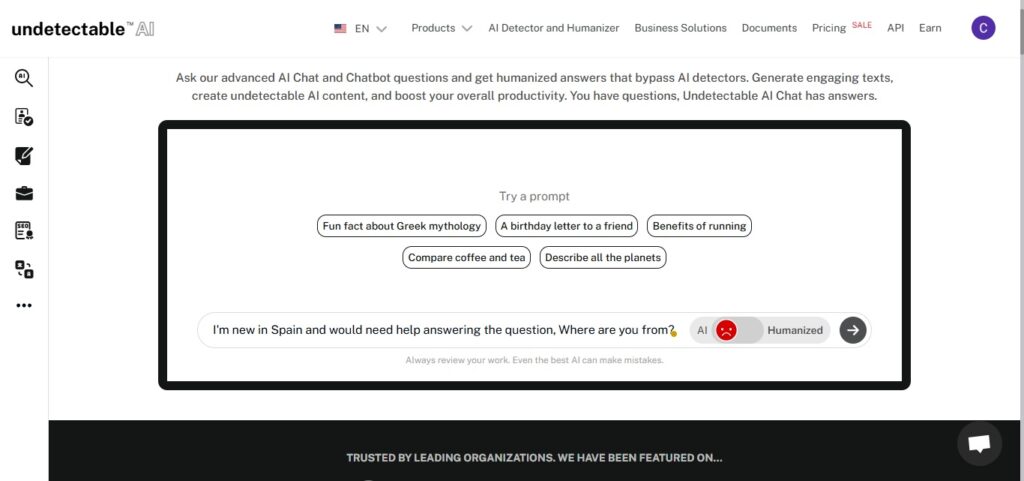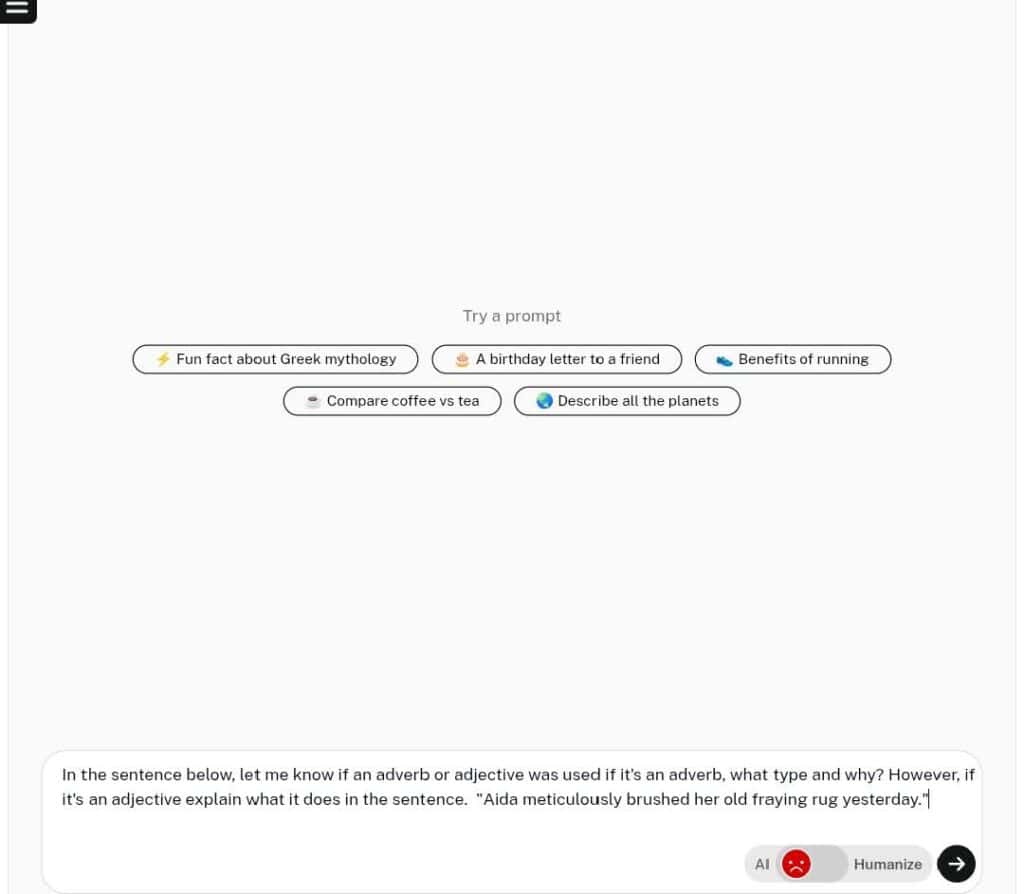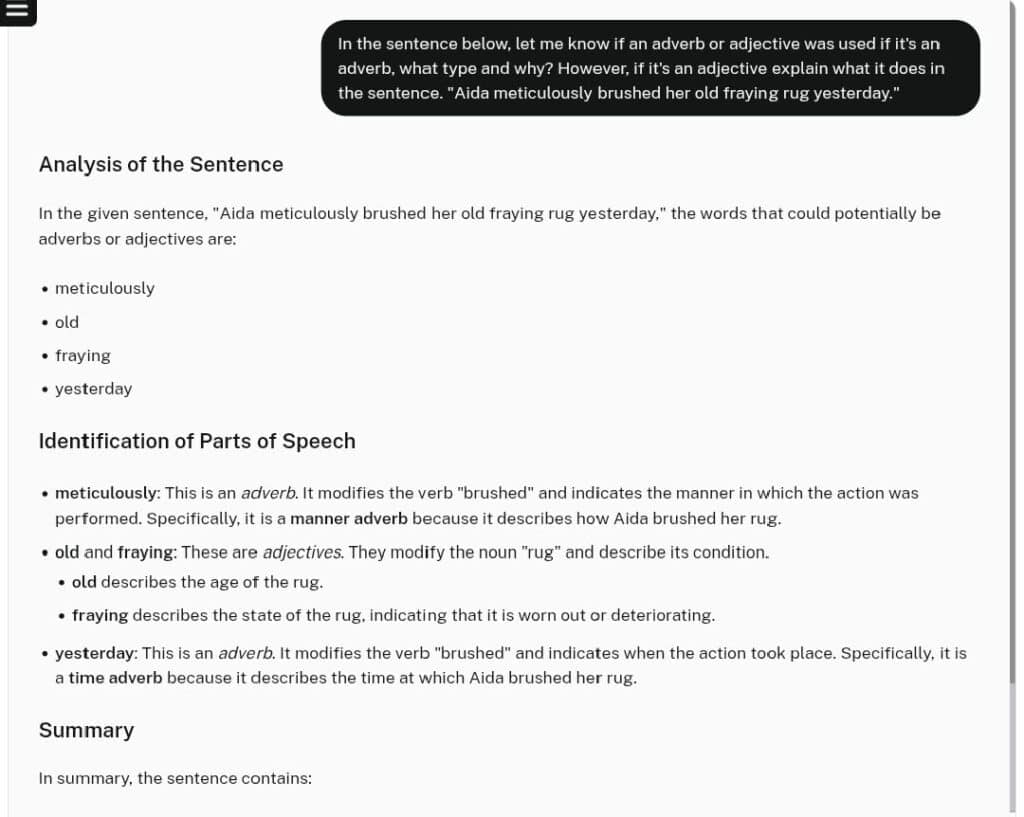At first glance, adverbs and adjectives might seem similar. However, that’s farther from the truth as these word classes have different functions and achieve vastly different effects.
Understanding “what is an adverb vs adjective and why is it so important to know the difference?” is the key to effective communication.
After you learn how to differentiate it, you will never find yourself doubting again as to whether you are to say feel bad or feel badly.
Key Takeaways
- Adjectives describe a noun or pronoun.
- Adverbs qualify verbs, adjectives, other adverbs, and entire sentences.
- Adverbs can be anywhere in a sentence and there may be more than one in a sentence.
- Multiple adjectives can be used in a sentence but they must follow a logical progression.
- Adverbs can be formed from Adjectives primarily through the suffix -ly.
What Is an Adjective?
An adjective is an interesting word class that makes our language expressions colorful.
So, here’s what makes an adjective quite distinct.
Definition and Function
An adjective is a word that describes, changes, or gives more details about a noun or pronoun.


Never Worry About AI Detecting Your Texts Again. Undetectable AI Can Help You:
- Make your AI assisted writing appear human-like.
- Bypass all major AI detection tools with just one click.
- Use AI safely and confidently in school and work.
Adjectives are the paint box of the English language, they draw colorful images and include all the necessary details, which make dull nouns appear rich and meaningful.
Hence, without adjectives, we’d be stuck with
- The car drove down the street
instead of
- The sleek red car drove down the street.
The main role of an adjective is to provide certain answers to the questions about nouns, like what kind, which one, how many, and how much.
What Adjectives Modify
Adjectives have two main targets to modify in sentences, which are nouns and pronouns.
Nouns
When modifying nouns, adjectives can describe:
- Physical Traits
- The tall lady won the race.
- The boy ran home to get his stout friend.
- Emotional Conditions
- Despite the situation, the sad girl tried to be happy.
- He laughed at the dazed woman.
- Abstract Qualities
- She gazed at her beautiful daughter.
- His teacher called him an intelligent fellow.
- Quantity
- Get her a few pencils from my drawer.
- Never knew you to turn down some water.
- Specificity
- Those girls laughed at him.
- Go get that cat for me.
- These people want to see you.
With any of the following above, you and anyone can effectively describe something, modify it, and make it vivid to your interlocutor.
Pronouns
In the case of pronouns, the adjectives tend to explain the state of a thing or person. It comes after a verb in a sentence.
- She is pretty.
- It is enchanting.
- He dressed up well.
Placement in Sentences
Adjectives are flexible in their placement in the sentence, but some positions of adjectives are more prominent and used than others.
The commonest position is immediately before the noun which they modify, the attributive position. For instance,
- The expensive watch
- A challenging problem, or
- Three yellow roses.
Adjectives may also follow linking verbs in what is termed the predicative position. This position usually places extra emphasis and can be especially helpful in persuasive writing.
Examples include:
- The watch is expensive
- The problem seems challenging, or
- The roses are yellow.

What Is an Adverb?
An adjective is a word that serves an imaginative function in sentences, helping you make your descriptions clearer.
To have you learn the difference between adverb vs adjective, we will also consider what an adverb is, what it does and the types of adverbs that can be found in English grammar.
Definition and Function
Unlike adjectives, an adverb is a word that can modify a verb, an adjective, another adverb, or a whole sentence.
Adverbs are interesting in the sense that they contain vital information regarding the manner, time, place, frequency, or extent in which an action takes place.
Simply put, adverbs are directors of your sentences. They instruct (verbs) actors on how to say their lines.
Although a verb may inform us that someone walked, an adverb will shed a little light on how the walking was done.
Example:
- “walked gracefully,”
- “walked hurriedly,”
- “Walked yesterday.”
This second level of meaning allows the readers to see the scenes more vividly and comprehend the undertones of the events in your words.
What Adverbs Modify
Adverbs are not only modifiers of verbs; they can also modify adjectives, other adverbs, as well as whole sentences.
Verbs
This is perhaps the most recognizable function of adverbs. When a verb is altered, adverbs are usually used to specify the manner of doing an action
- He answered quickly.
- They worked diligently.
Adjectives
Adverbs may also be used to modify adjectives, thus strengthening or weakening their meaning. For example;
- A difficult problem
- An extremely difficult problem.
The adverb extremely does not alter what type of problem it is. Instead, it increases the extent of difficulty of the problem.
Other Adverbs
Adding to that, adverbs can modify other adverbs can producing many levels of meaning, which can be very elaborate. For example;
- She spoke very softly.
The adverb very is an adverbial modifier to the adverb “softly,” which is a modifier of the verb “spoke.” This layering of effect enables the writers to make accurate shades of meaning.
Clauses or Sentences
Lastly, adverbs may be used to alter whole sentences or clauses and offer a background or show the speaker’s attitude towards the information portrayed.
Such words as: fortunately, obviously, frankly, in the sentences would do the trick.
For instance,
- Fortunately, the meeting was called off.
Here, the word fortunately is not qualifying some word but has a general comment on the whole situation.
Adverb Types
Adverbs can be used in various capacities. Owing to this, various categories of adverbs make the usage of adverbs more appropriate.
With this, you can identify their functions in a better way, clearing up the various dimensions of action and description.
Manner
Adverbs of manner tell the way something occurs. The question that these adverbs answer is How? The most common examples are adverbs that end in -ly.
They include carefully, quickly, quietly, boldly, and gracefully.
Not every manner adverb, however, does end in -ly. Other adjectives, such as well, fast, hard, and straight, also have a description of how things are done.
Time
Adverbs of time are simple and inform us about the time something occurs. To identify it, simply know that it answers questions such as when? And the length of time?
Examples are yesterday, soon, always, recently, eventually, and immediately. These adverbs may be related to a particular time (tomorrow, now) or periods (next year, last week).
Place
Adverbs of place show where something takes place. They provide the answer to the question “where” and “how far?”
They include: here, there, everywhere, outside, upstairs, forward, and nearby.
Such locative words are used as adverbs and assist the readers to coordinate themselves in space and also in getting a better idea of the scene in their minds.
Frequency
Adverbs of frequency explain how frequently something happens and they answer the question of how often? Or again, “What is the number?”
At the same time, the frequency is analogous to time adverbs. Frequency tells us how often or how rarely a thing happens instead of telling us when it happens.
Here we find the usage of words such as always, never, sometimes, frequently, occasionally, twice, and daily. These adverbs assist in setting patterns and routines in what you are saying.
Degree
Adverbs of degree are here to show the degree or extent of actions. This adverb is used in such questions as How much? or To what extent?.
Examples are very, quite, extremely, barely, almost, too, and enough. These adverbs are most convenient in those cases when you are to formulate distinct descriptions and not to use vague wording.
You can use our AI Chat to get prompt clarification on whether a particular word is acting as an adverb or adjective in a given context with a detailed explanation.
This is ideal for writers, students, and professionals who wish to make their communication as precise and polished.

Here’s how to go about it. First things first, ask the AI chat a question concerning what is adverb vs adjective. For instance:

Send in the question, so our tool can respond like it did here.

AI Chat answered the question, clarifying the what is a adverb and adjective dilemma in the sentence, while also explaining why they function as such.
You, too, can give the AI chat a spin.
Key Differences Between Adverbs and Adjectives
Although adverbs vs adjectives can be used as modifiers, their roles and impacts in a sentence are essentially different.
These differences are not easy to master; however, they allow you to get rid of obvious mistakes, which you make when developing the grammar of your writing, and make your style much more accurate and precise.
| Differences | Adjectives | Adverbs |
| Can Modify | It modifies nouns and pronouns. | It modifies verbs, adjectives, other adverbs, or entire sentences. |
| Questions | What kind? Which one? How many? Whose? | How? When? Where? How often? To what degree? |
| Common Examples | Red, tall, beautiful, three, happy | Quickly, yesterday, here, often, very |
| Typical Formation | Base form or with suffixes (-ful, -less, -ous) | Often formed by adding -ly to adjectives |
| Position in Sentence | Before a noun or after a linking verb | It is not rigid, and this implies that it can be applied at the start, middle, or end of a sentence. |
Do not stress yourself if you have difficulty determining how and where to use the right modifier.
Our Grammar Checker will automatically flag usage of adverb vs adjective mix-ups and correct such errors so you never miss a point on your modifier again.

How to Form Adverbs from Adjectives
Adverbs have a common formation process from adjectives, yet there are a number of rules, exceptions and unusual forms that can lead to traps even for an experienced writer.
The following are some of them.
Adding “-ly”: Quick Guide
The simplest way of generating adverbs is by affixation of the suffix “-ly” to a simple form of the adjective that ends with a consonant sound.
- Quick becomes Quickly.
- Careful becomes Carefully.
Most adverb formations fall under this fundamental rule. But not all the adverbs take the given pattern.
For instance, some adjectives undergo spelling modifications when converted to adverbs by adding the suffix “-ly”.
Specifically, adjectives that end in “-y,” turn the “-y” into “-i” before adding the “-ly” suffix.
- Easy becomes Easily.
- Angry becomes Angrily.
This rule keeps awkward letter combinations and pronunciation-apparent letters clear.
Irregular Forms (Well, Fast, Hard)
Some famous adverbs are not in the standard “-ly” adverb format, which can confuse writers.
There are some irregularities in English we need to adapt to at times and one of them is the abnormal forms of adverbs.
Have a look at them. Thus, the adjective good makes an adverb well, and not goodly.
This erratic change is among the most basic differentiations in English grammar.
- You feel “good” (this adjective describes your state), but
- You perform “well” (this adverb describes how you perform an action).
Understanding this difference will help you avoid errors like:
- “I did good on the test”
When you mean,
- “I did well on the test.”
Conversely, remember that numerous adjectives that have something to do with speed, intensity or manner do not change form when they are used as adverbs.
Therefore, the word fast is both an adjective and an adverb. This means it can be used either in adjectival form e.g “A fast car”, or as an adverb e.g “Drive fast”.
When Not to Add “-ly”
It is right that some adjectives can be converted to adverbs by adding the “-ly” suffix to the words. But you should also know when not to use “-ly”.
There are a number of word classes that do not require the suffix and identifying them helps avoid the risk of over-corrections.
Some of the words seem to be adjectives and are, in actuality, adverbs. Words which are time-bound.
For example, today, tomorrow, yesterday, now etc serve as adverbs in themselves. Also, words that are place adverbs like here, there, everywhere, nowhere and somewhere.
Examples in Context
The table below shows a side-by-side comparison of how these word classes operate in similar contexts, indicating the difference in roles and the impact they have on the meaning.
| Adjectives | Adverbs |
| The slow train arrived at the station. | The train moved slowly through the tunnel. |
| She has a beautiful voice. | She sings beautifully at every concert. |
| That was a quick decision. | She decided quickly under pressure. |
| The loud music bothered everyone. | The band played loudly all night. |
| He seems nervous about the presentation. | He spoke nervously during the meeting. |
| The bright light hurt my eyes. | The sun shone brightly in the sky yesterday. |
| She made a wise choice. | She chose wisely among the options. |
| The angry customer left the store. | Angrily, the customer complained to the manager. |
| The fresh bread smells wonderful. | The bread was baked freshly this morning. |
| The hard test challenged students. | The students worked hard to pass the exams. |
Test our AI Detector and Humanizer now using the widget below!
Final Thoughts
For some, the discussion of what is an adjective vs adverb cannot be easily put to rest.
However, with careful exercise, you can recognize that adverbs focus on how things are done and adjectives describe the general state of subjects, rather than actions in a sentence.
Nevertheless, we could make mistakes sometimes, as these word classes share similarities and irregularities.
Make sure to use our AI Chat and Grammar checker if you ever get stuck.
Undetectable AI makes learning and writing smoother—try it today.
